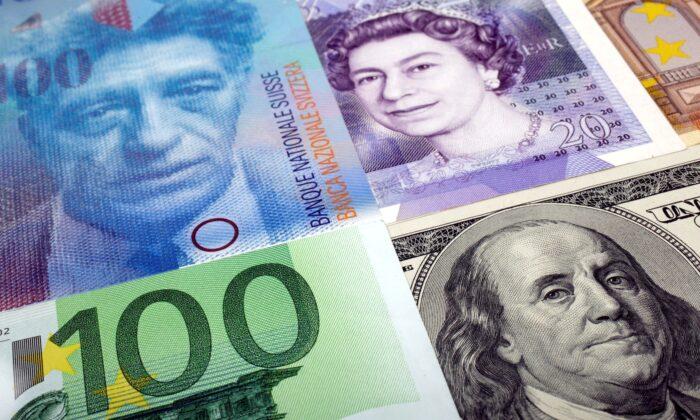LONDON—The euro, sterling, and Swedish crown rose against the U.S. dollar on Tuesday as traders assessed a slew of economic data, including UK and eurozone job figures plus German economic sentiment.
Sterling rose 0.6 percent to $1.1830, trading not far from a 2–1/2-month top at $1.1855 from Friday ahead of a tough government budget plan later this week and after data showing Britain’s unemployment rate unexpectedly rose and vacancies fell for a fifth report in a row as employers worried about the economy.
Francesco Pesole, FX strategist at ING, said his team would still expect a 50 basis point rate hike by the Bank of England in December as “unemployment rate edged higher but was mostly driven by hiring freezes rather than rising redundancies.”
The focus is the Autumn Budget announcement on Thursday. “Markets are being flooded with reports about which measures will be announced ... Expect more headlines and some sterling reaction today,” he added.
British finance minister Jeremy Hunt said that lowering government debt was the only option to reduce inflation.
The euro surged to $1.0418, its highest since early July with traders saying the main release in focus in the eurozone was the German economic sentiment ZEW index, which rose in November.
“Due to concerns about a deep recession over the winter the index had completely collapsed recently. In view of the mild start to the winter heating period and the well filled gas stores analysts are likely to have got their hopes up that things might not turn out to be quite so bad,” said Antje Praefcke, FX Analyst at Commerzbank.
Data also showed employment in the single currency area rose in the third quarter.
The European Central Bank (ECB) will probably continue to raise interest rates beyond 2 percent, but “jumbo” rate hikes will not become a new habit, France’s central bank chief Francois Villeroy de Galhau said.
US Inflation
The dollar index, which measures the currency against six counterparts including the strengthening sterling and euro, slipped 0.7 percent to 106.18, briefly touching its lowest in three months.The index tumbled 3.9 percent last week, its worst performance since March 2020, after U.S. consumer prices rose less than expected, stoking speculation a peak in rates might be near.
Fed Vice Chair Lael Brainard on Monday echoed weekend comments by Fed Governor Christopher Waller that interest rates need to keep rising to battle inflation, although potentially at a slower pace. Brainard also stressed that risks will become more two-sided.
“The U.S. dollar is trying to form a post-CPI base, with Waller doing his best but the more influential Brainard somewhat less hawkish,” said Sean Callow, a senior currency strategist at Westpac.
For the dollar index, “the September highs above 114 are looking increasingly like the cyclical peak, but we expect support to start to emerge into the 105 area,” Callow said.
The yuan garnered support from an easing of strained China–U.S. tensions following Joe Biden’s summit meeting with Xi Jinping.
The onshore Chinese yuan was changing hands at 7.0450, up 0.4 percent on the day, largely shrugging off a surprise contraction in retail sales.





